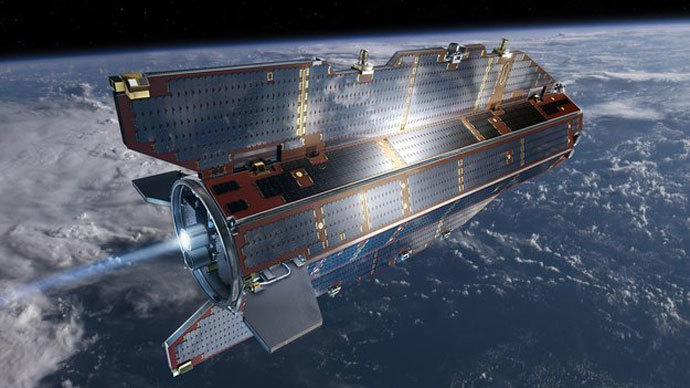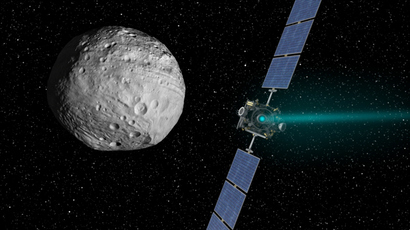Europe’s gravity-surveying ‘Ferrari’ satellite plummeting to Earth likely incinerated - officials

A satellite that mapped the Earth’s gravity for four years likely burned up as it re-entered the atmosphere on Sunday. The device had completed its mission before starting it uncontrolled descent.

"By the time you read this, the spacecraft's amazing flight will, most likely, have come to an end," space agency spokesman Daniel Scuka wrote in a post, Reuters reports. There’s no information yet about where any debris could have fallen.
Earlier the European Space Agency (ESA) said that contact with GOCE was established from “the Troll station in Antarctica at 23:42 CET. The central computer temperature is at 80ºC and the battery is at 84ºC. At an altitude of less than 120 km (74.5 miles), the spacecraft is – against expectations – still functional.”
With the xenon gas for the motors expired, scientists at the European Space Agency had literally no way of steering the vessel, so they were relying on good luck for the re-entry to go smoothly without causing any damage on Earth.
It was 25 years ago that the ESA last attempted such a free-fall, during the Isee-2 magnetosphere mission.
The space agency’s one-ton Gravity field and steady-state Ocean
Circulation Explorer, or GOCE, was launched from Plesetsk, in
northern Russia, in 2009.
Having spent 2 1/2 more years on its mission than originally
planned, it was taken to extremely low orbits with the aim of
providing gravity data of unparalleled accuracy.
“This innovative mission has been a challenge for the entire
team involved: from building the first gradiometer for space to
maintaining such a low orbit in constant free-fall, to lowering
the orbit even further,” said Volker Liebig, ESA’s director
of Earth observation programs. “The outcome is fantastic. We
have obtained the most accurate gravity data ever available to
scientists. This alone proves that GOCE was worth the effort –
and new scientific results are emerging constantly.”
The $466 million satellite’s sleek aerodynamic design led to it
being nicknamed the “Ferrari of space.”
In late October, the satellite’s supply of xenon gas ran out;
however, for two more weeks the satellite continued its orbit
until its engines died and it started the inevitable fall to
Earth.
The problem scientists are faced with now is, despite knowing
that most of GOCE will burn up in Earth’s atmosphere, around 50
fragments of debris weighing in at about 275 kilograms will slip
past it. This means they could end up falling literally anywhere.
The lack of knowledge is caused by constant changes in the
Earth’s upper atmosphere, which are influenced by solar activity.
An international campaign involving the Inter-Agency Space Debris
Coordination Committee is monitoring the situation continuously,
the ESA said, promising to “keep the relevant authorities
permanently updated.”
Scientists at NASA estimate that an average of one piece of
falling space debris daily survives the Earth’s atmosphere. They
are confident that the chances of debris causing serious damage
are small, as the record of even property damage has been almost
negligible in the last half-century.
That assumption is based on the simple fact that two-thirds of the planet is covered in water, and that most of the Earth’s land masses are quite sparsely populated.
Russian, American and German satellites have fallen in the past,
often in circumstances involving the failure of an engine at very
low orbits. Though no substantial damage was ever reported,
debris as heavy as 160-400 kilograms had previously fallen within
hundreds of kilometers of populated areas in the Pacific.














